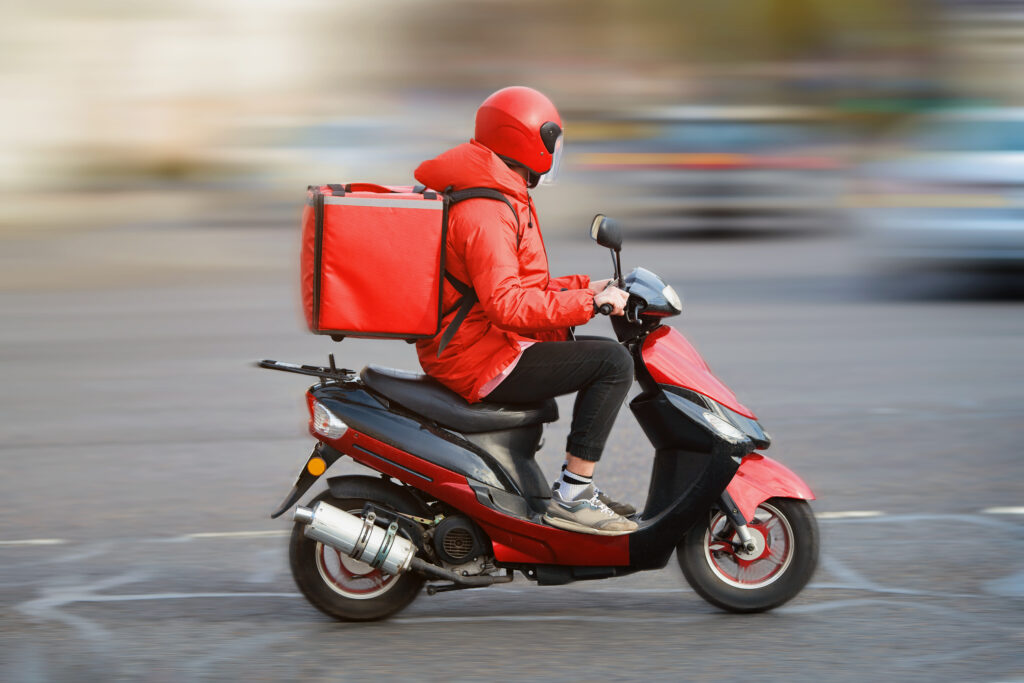In Australia, the gig economy offers a flexible way for international students to earn a living. Whether you’re zipping around town delivering meals or transporting passengers from one location to another, understanding the ins and outs of such jobs is important.
This article will guide you through legal requirements, getting started, maximising earnings, and the support services available to you.
Legal requirements
Visa requirements
As an international student in Australia, you are permitted to work up to 48 hours per fortnight during the academic term. It’s important to adhere strictly to this limit, as exceeding it can jeopardise your visa status. This cap includes all paid employment types, including food delivery and ridesharing platforms.
It’s important to note that for certain gig economy jobs, especially in ridesharing, your work hours are counted from the moment you clock into the system. This means that even if you are not actively receiving requests or making deliveries, any time logged in as available for work counts towards the 48-hour fortnightly limit.
Tax and insurance
Regardless of whether you’re delivering food or driving passengers, you will need an Australian Business Number (ABN) and will need to pay taxes on your earnings if you earn above the tax threshold. Insurance is also a key consideration—ensure you are covered for any incidents that might occur while on the job.
License requirements
To work as a rideshare driver or delivery driver in Australia, a valid driver’s license is mandatory. If you have an overseas license, make sure to verify its validity in Australia; our guide on obtaining a driver’s license in Australia can help you with this process. Additionally, age restrictions apply: you need to be at least 20 years old (or 21 in New South Wales and Victoria) to drive for rideshare platforms. However, you can start delivering at 18.
Tips for getting started
What ridesharing/delivery platform should I choose?
When choosing a platform for gig work, it’s important to consider the differences in commission rates, popularity, and operational areas. For example, food delivery services like UberEats, DoorDash and Menulog, along with rideshare options such as Uber and DiDi, each have their unique offerings and benefits.
Didi, for instance, charges a lower commission of 14-15 per cent and pays about $0.20 more per km compared to Uber’s 27.5 per cent rate. However, Uber holds an 80 per cent market share in Australia, which often translates to more frequent job opportunities despite the higher commission. Both also offer their own rewards and benefits for their drivers, which you can view below:
What equipment do I need?
For delivery drivers, the essentials include a dependable bike, scooter, or car. Consider the type of deliveries you’ll be doing when choosing your vehicle—electric bikes, for instance, are becoming a favoured choice for urban areas due to their efficiency and sustainability. Safety gear is non-negotiable, with helmets and reflective clothing topping the list to ensure you’re seen and protected. A capable smartphone with a good data plan is your lifeline in this job. Remember, you can claim a lot of these expenses on tax!
Rideshare drivers, on the other hand, will need a vehicle that meets the specific standards set out by their chosen platform. This usually means a newer model that’s clean, comfortable and well-maintained. How you present your vehicle can have a big impact on your ratings and tips, so keeping it tidy and pleasant is key.
How can I optimise my earnings?
Your earnings will fluctuate based on where you work, when you choose to log on, and how you manage your schedule. Urban drivers and delivery people often enjoy a higher volume of requests, while aligning your hours with peak demand times can significantly boost your income.
For food delivery, the busiest hours tend to be around lunch and dinner, especially on weekends. Rideshare drivers find more success during early mornings and late evenings on weekdays and throughout the weekends when people are heading to or from leisure activities.
Being efficient means more than just moving fast—it’s about smart moves. Opt for back-to-back trips that keep you in a busy area to cut down on dead mileage. Use gig worker apps like Solo to keep an eye on your earnings and expenses. Connecting with fellow drivers or delivery people on Reddit and in Facebook groups can also provide valuable insights and tips for making the most out of your hours on the clock.
Safety tips
As a gig worker, whether you’re delivering food or driving passengers, knowing and following your state or territory’s road rules is key. Here are a few non-negotiables to remember:
- Wear appropriate safety gear, such as helmets for cyclists and reflective clothing for better visibility.
- Regularly maintain your vehicle or bike to prevent accidents and ensure it performs reliably.
- Verify your rider by matching their details with what’s shown in the app before allowing them to enter your vehicle.
- Stay focused while driving by avoiding distractions like texting.
- Encourage all passengers to buckle up, as it enhances safety for everyone in the vehicle.
Safework Australia offers essential safety resources for delivery drivers and riders, including a detailed guide that provides strategies for safely navigating urban environments and responding effectively to common safety challenges, and a quiz to test your understanding of essential safety measures and practices.
Rideshare providers like Uber incorporate safety measures into their platforms, including a fatigue management policy that requires drivers to take breaks after long shifts. They also anonymise your phone number when contacting passengers through the app, protecting your personal information.
Legal rights and dispute resolution
In the past, gig workers in Australia weren’t classified as employees, excluding them from benefits like sick leave, annual leave, and minimum wage guarantees. To address this, new legislation now recognises “employee-like workers,” which includes those working through platforms like food delivery and ridesharing.
Under this new category, the Fair Work Commission can set minimum standards for payment, record-keeping and insurance. However, it doesn’t regulate overtime or scheduling, preserving the flexibility many gig workers value.
A key protection is against “unfair deactivation,” ensuring workers aren’t removed from platforms without a valid reason. Additionally, these workers can now join together to negotiate better working conditions and can resolve disputes through the Fair Work Commission.
Support and resources
Support networks are essential for gig workers in Australia, helping them tackle the daily challenges of their jobs. The Australian Rideshare Driver Network is a fantastic resource, providing a place for rideshare drivers to connect, share experiences, and access helpful resources that enhance their work lives.
Melbourne is leading the way with innovative support services for gig workers. Initiatives like The Pit Stop Initiative by The Salvation Army at 69 Bourke St offer a welcoming spot for delivery riders to pause and recharge. Open from Monday to Thursday between 1:30 pm and 4:00 pm, it provides free refreshments and charging stations. Another valuable resource is the Gig Worker’s Hub on Elizabeth St, serving as a supportive meeting point for gig workers.
These initiatives are setting a trend, and we’ll hopefully see similar gig worker support networks develop across Australia.





